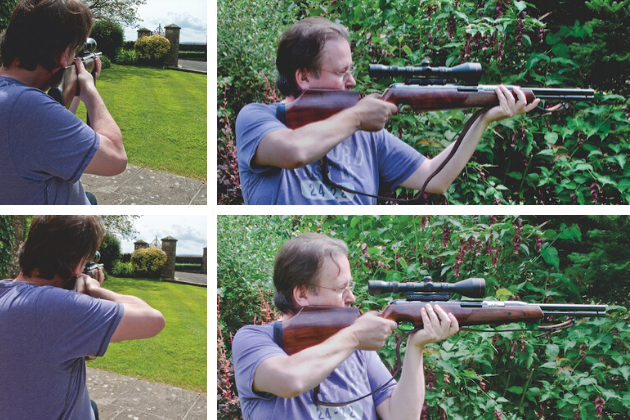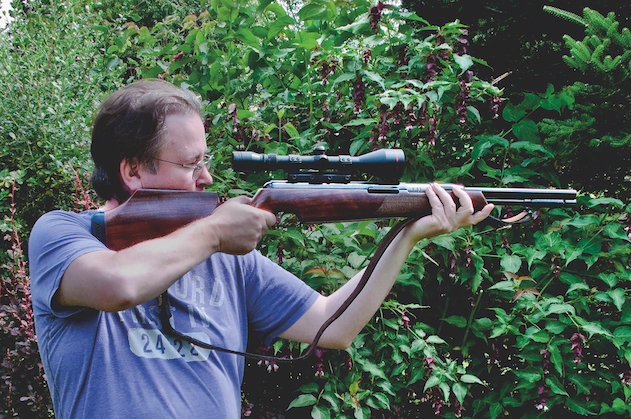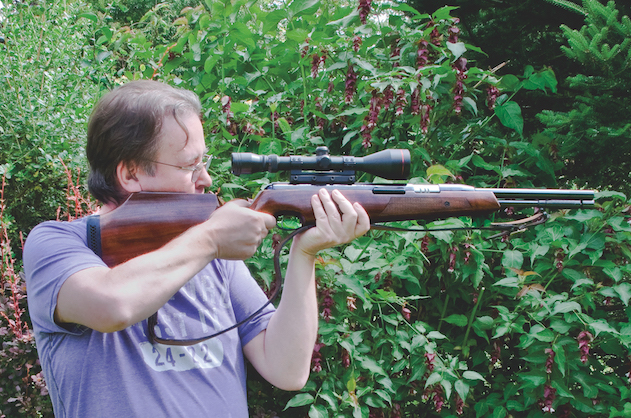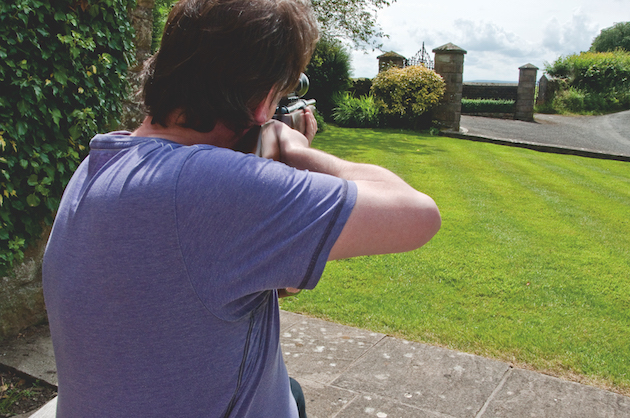Which are the best air rifles for shooting rabbits?
Air rifles: I was rabbiting recently with a .177 air rifle, but I couldn’t hit anything. Is this calibre powerful…
Win CENS ProFlex DX5 earplugs worth £1,149 – enter here

Getting good at shooting an air rifle is only half the battle. Staying good is the other half and it does not happen by chance – it requires constant attention. As well as getting to know your combo, hunters need to maintain a motor/muscle memory in order to get the best out of hunting.
Knowledge of how your set-up performs is the first step. Then learn how your trigger ‘feels’ and how to shoulder your gun correctly so that your face meets the cheekpiece in the same place every time, and that eye-to-scope alignment is consistent.
These processes need to be practised so that they become intuitive and you no longer need to think about it. Shooting from different stances and positions, at different distances and angles should be practised so that nothing surprises you in the field.
As a consequence of all this, most hunters will either have a practice range in their garden, on the farmland, or be a member of an airgun club. Hunters might also be interested in target shooting competitions, but even if they’re not, hunters still need target practice to gain proficiency and maintain a sufficient level of shooting skill.
If I haven’t been shooting an air rifle for a few weeks, I notice it immediately when I pick the gun up and have a few practice shots at a target. It matters not that I have been shooting for 35 years, the consistency in my shooting will have deteriorated – albeit marginally – and so a few test shots and thoughts about technique serve as a timely reminder until it all starts coming back to me.
It is often the case that the last time you were down the range shooting an air rifle you were drilling single holes at 35 yards, but don’t expect that proficiency to hang around without practice. Staying sharp requires dedication. Hunting is not always sufficient because you might go days before a series of opportunities present themselves, and hunting in the field is not the place to experiment with your technique.
Air rifles: I was rabbiting recently with a .177 air rifle, but I couldn’t hit anything. Is this calibre powerful…
You can save a wad of your hard-earned cash by buying a second-hand air rifle. But if you don’t know…
I am certainly no target shooter. However, I am aware of the small idiosyncrasies that creep into all our styles of shooting, and I’ve thought long and hard over the years about what suits my style more.
Do not feel you need to shoot a certain way if it feels uncomfortable or unnatural to you. What comes naturally is most important, unless it truly leads to bad habits. The issue of cant is a good example of a clear bad habit. Cant is when the airgun is not being held level – either the left or right-hand side of the gun being higher than the other side. It can occur very easily when looking through the scope at a landscape that is not level.
We tend to be influenced by the horizontal plane of the environment and subconsciously adjust the orientation of the airgun in the shoulder to match what we see, but the truth is, what we see in the environment is itself rarely level. The magnitude of this can be slight, but will have a big impact on your shot placement and more so with increasing distance.
One tip when practising is to get a friend to stand behind you and correct your alignment when shouldering the airgun. Always make sure the airgun is seated correctly in your shoulder. There are lots of little steps in shouldering the airgun, so make sure the whole process of standing and shouldering is almost automatic by practising all these elements.
Another issue refers to shooting ‘thumb up’ or ‘thumb down’. I know a few target shooters who use a standard Sporter stock, but like to shoot ‘thumb up’. What this refers to is the position of your thumb, on your trigger hand, on the grip of the stock. Shooting ‘thumb up’ means the thumb on this hand does not go all the way around the grip, but rides up the back of the grip – as though to give someone a thumbs up.
Some find this more comfortable and argue that it allows for a better trigger-pull technique, by imagining squeezing between the trigger fingers and the thumb. Again, it is all subjective and likely influenced by the physical characteristics of the shooter’s hand, the rake angle on the grip of the stock and the position of the trigger. Nonetheless, explore what works for you and try to settle on a consistent shooting style.
Different configurations of how to hold and steady the front of the airgun.

In the picture here, the forehand is at the end of the stock. By being closer to the muzzle one might argue that it helps to control the front end of the gun – however, the leading arm lacks support from the rest of the body.

In this picture the elbow is tucked closer to the body and gains additional support from it.
Elbow up, or elbow down when the airgun is in the shoulder? Again, explore your technique and make sure that you practise the one with which you are most comfortable. For me, lifting my elbow creates a nice pocket for the butt of the stock to sit into, and dropping my elbow creates my chest muscle to pop the gun forward an inch or two – though it is still very comfortable. It is important to be aware of how such factors could be impacting on your technique – and it can be hard to monitor all these different facets once the gun is in the shoulder. Use what works for you, but be consistent in practice and in the field. Note: The rake on the pistol grip of the stock can also impact what feels natura. which means you might shoulder different airguns in very different ways. I find both comfortable.

Elbow up

Elbow up
Get the latest news delivered direct to your door
Discover the ultimate companion for field sports enthusiasts with Shooting Times & Country Magazine, the UK’s leading weekly publication that has been at the forefront of shooting culture since 1882. Subscribers gain access to expert tips, comprehensive gear reviews, seasonal advice and a vibrant community of like-minded shooters.
Save on shop price when you subscribe with weekly issues featuring in-depth articles on gundog training, exclusive member offers and access to the digital back issue library. A Shooting Times & Country subscription is more than a magazine, don’t just read about the countryside; immerse yourself in its most authoritative and engaging publication.

